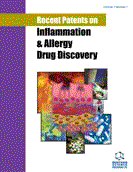Abstract
Background: Molluscum contagiosum is a viral cutaneous infection in childhood that occurs worldwide. Physicians should familiarize themselves with this common condition.
Objective: To review in depth the epidemiology, pathophysiology, clinical manifestations, complications and, in particular, treatment of molluscum contagiosum. Methods: A PubMed search was completed in Clinical Queries using the key term “molluscum contagiosum”. Patents were searched using the key term “molluscum contagiosum” from www.google.com/patents, http: //espacenet.com, and www.freepatentsonline.com. Results: Molluscum contagiosum is caused by a poxvirus of the Molluscipox genus. Preschool and elementary school-aged children are more commonly affected. The virus is transmitted by close physical contact, autoinoculation, and fomites. Typically, molluscum contagiosum presents as asymptomatic, discrete, smooth, flesh-colored, dome-shaped papules with central umbilication from which a plug of cheesy material can be expressed. Some authors suggest watchful waiting of the lesions.Many authors suggest active treatment of lesions for cosmetic reasons or concerns of transmission and autoinoculation. Active treatments may be mechanical (e.g. cryotherapy, curettage, pulsed dye laser therapy), chemical (e.g. cantharidin, potassium hydroxide, podophyllotoxin, benzoyl peroxide, tretinoin, trichloroacetic acid, lactic acid, glycolic acid, salicylic acid), immune-modulating (e.g. imiquimod, interferon-alpha, cimetidine) and anti-viral (e.g. cidofovir). Recent patents related to the management of molluscum contagiosum are also retrieved and discussed. These patents comprise of topical compositions and herbal Chinese medicine with limited documentation of their efficacy. Conclusion: The choice of treatment method should depend on the physician’s comfort level with the various treatment options, the patient’s age, the number and severity of lesions, location of lesions, and the preference of the child/parents. In general, physical destruction of the lesion, in particular, cryotherapy with liquid nitrogen and chemical destruction with cantharidin are the methods of choice for the majority of patients.Keywords: Cantharidin, central umbilication, cryotherapy, dome-shaped papules, poxvirus, epidemiology.
Article Metrics
 75
75 8
8 1
1 1
1


















